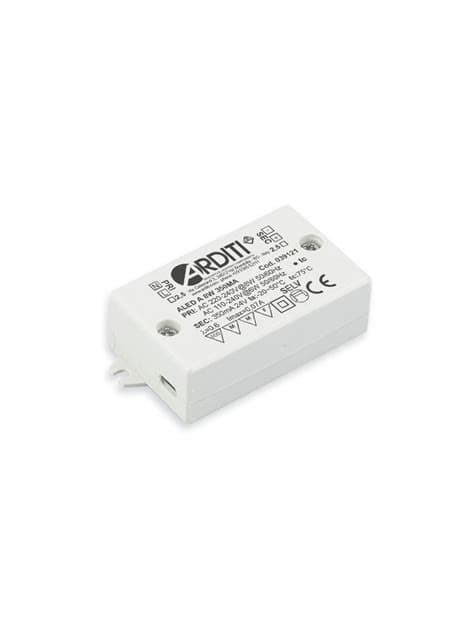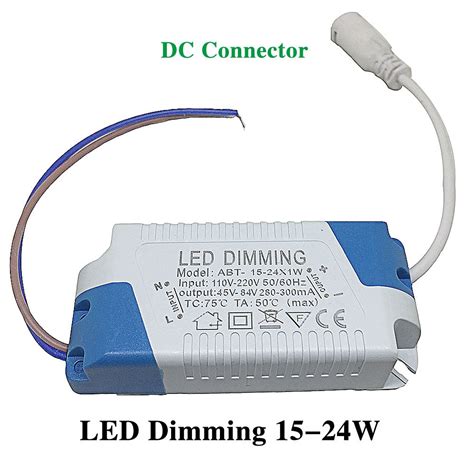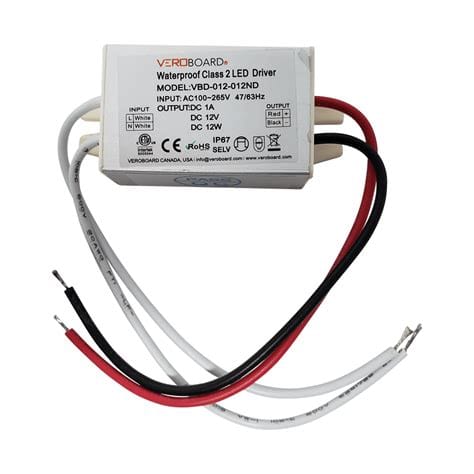Introduction to High Power LED Control
Light emitting diodes (LEDs) have become ubiquitous in modern electronics due to their high efficiency, long lifespan, and versatile applications. While standard LEDs typically operate at currents of 20mA or less, high power LEDs can require hundreds of milliamps to several amps to function optimally. Directly powering these LEDs with a microcontroller or low-current power supply is not feasible, as it would exceed their current handling capabilities. This is where power transistors come into play, acting as switches and current amplifiers to control the LED’s brightness. In this article, we will explore how to use a TIP3055 power transistor as an LED Driver for controlling high current LEDs.
Understanding the TIP3055 Power Transistor
The TIP3055 is an NPN bipolar junction transistor (BJT) designed for high power applications. It has a maximum collector current rating of 15A and can dissipate up to 90W of power, making it suitable for driving high current loads like power LEDs. The TIP3055’s pinout and key specifications are as follows:
| Pin | Function |
|---|---|
| 1 | Base |
| 2 | Collector |
| 3 | Emitter |
| Parameter | Value |
|---|---|
| Maximum Collector Current | 15A |
| Maximum Collector-Emitter Voltage | 60V |
| Maximum Power Dissipation | 90W |
| DC Current Gain (hFE) | 20-100 |
To use the TIP3055 as an LED driver, we will configure it as a low-side switch in a common emitter configuration. The transistor will be controlled by a PWM signal applied to its base, which will regulate the current flowing through the LED connected to its collector.

Designing the LED Driver Circuit
The LED driver circuit consists of the following components:
– TIP3055 power transistor
– Current limiting resistor (R1)
– Base resistor (R2)
– High power LED
– PWM signal source (microcontroller or function generator)
Here’s a schematic diagram of the circuit:
+-----+
| |
| |
| |
| |
+--+--+
|
|
|
|
+-+
| |
| | R1
| |
+-+
|
|
| +-------+
+-----|Base 1|------+
| | | |
| |TIP3055| |
| | | |
+-----|Emitter| |
| 3 | |
+-------+ |
| |
| |
+-+ |
| | R2 |
| | |
+-+ |
| |
GND |
|
|
+-----+
|
| LED
|
+-----+
|
GND
The current limiting resistor R1 is calculated based on the LED’s forward voltage drop and the desired operating current. For example, if we have a 3.6V LED with a forward current of 700mA, and we are using a 12V power supply, the resistor value can be calculated using Ohm’s law:
R1 = (Vsupply – Vf) / If
= (12V – 3.6V) / 0.7A
= 12Ω
The base resistor R2 is chosen to provide sufficient base current to saturate the transistor while not exceeding the microcontroller’s current sourcing capability. A typical value for R2 would be in the range of 1kΩ to 10kΩ.

Implementing PWM Control
To control the brightness of the LED, we will use pulse-width modulation (PWM). PWM is a technique where a digital signal is rapidly switched on and off, creating a square wave with a variable duty cycle. The duty cycle represents the proportion of time the signal is in the “on” state. By varying the duty cycle, we can effectively control the average current flowing through the LED, thus adjusting its brightness.
Most microcontrollers have built-in PWM peripherals that simplify the generation of PWM signals. For example, using an Arduino board, we can use the analogWrite() function to set the duty cycle of a PWM pin. The function accepts a value between 0 and 255, corresponding to duty cycles from 0% to 100%.
Here’s a sample Arduino code snippet that demonstrates LED brightness control using PWM:
const int ledPin = 9; // PWM pin connected to the transistor's base
const int pwmFreq = 500; // PWM frequency in Hz
void setup() {
pinMode(ledPin, OUTPUT);
}
void loop() {
// Fade the LED brightness up
for (int dutyCycle = 0; dutyCycle <= 255; dutyCycle++) {
analogWrite(ledPin, dutyCycle);
delay(10);
}
// Fade the LED brightness down
for (int dutyCycle = 255; dutyCycle >= 0; dutyCycle--) {
analogWrite(ledPin, dutyCycle);
delay(10);
}
}
In this example, the LED brightness is gradually increased from 0% to 100% and then decreased back to 0% in a loop, creating a fading effect.

Heat Dissipation Considerations
When working with high power LEDs and transistors, it is crucial to consider heat dissipation. The TIP3055 can dissipate up to 90W of power, but this is only possible with proper heatsinking. Without adequate heat dissipation, the transistor can quickly overheat and fail.
To calculate the required heatsink, we need to know the transistor’s power dissipation and the maximum allowable junction temperature. The power dissipation can be calculated using the following formula:
P = (Vsupply – Vf) * If
Where:
– P is the power dissipation in watts
– Vsupply is the power supply voltage
– Vf is the LED’s forward voltage drop
– If is the LED’s forward current
For example, using a 12V power supply with a 3.6V LED and a forward current of 700mA, the power dissipation would be:
P = (12V – 3.6V) * 0.7A
= 5.88W
The junction-to-ambient thermal resistance (Rθja) of the heatsink should be chosen such that the junction temperature remains below the transistor’s maximum rated value (typically 150°C for the TIP3055). The required thermal resistance can be calculated using the following formula:
Rθja = (Tj_max – Ta) / P
Where:
– Rθja is the junction-to-ambient thermal resistance in °C/W
– Tj_max is the maximum junction temperature
– Ta is the ambient temperature
– P is the power dissipation
Assuming an ambient temperature of 25°C and a maximum junction temperature of 150°C, the required heatsink thermal resistance would be:
Rθja = (150°C – 25°C) / 5.88W
= 21.3°C/W
A heatsink with a thermal resistance lower than this value should be chosen to ensure proper cooling of the transistor.
PCB Layout Considerations
When designing a PCB for the LED driver circuit, there are several factors to consider for optimal performance and reliability:
-
Trace width: The traces carrying high currents should be wide enough to handle the expected current without excessive heating. A general rule of thumb is to use a trace width of at least 0.01 inches per amp of current.
-
Ground plane: Using a solid ground plane on the PCB helps to minimize ground loops and reduces electromagnetic interference (EMI). It also provides a low-impedance return path for the currents.
-
Decoupling capacitors: Place decoupling capacitors close to the transistor and LED to minimize the effect of supply voltage fluctuations and to suppress high-frequency noise.
-
Thermal management: If the transistor is dissipating significant power, consider using a metal core PCB (MCPCB) or a PCB with a dedicated heatsink area to improve heat dissipation.
-
Connector ratings: Ensure that the connectors used for the power supply and LED are rated for the expected currents to avoid overheating and potential fire hazards.
Frequently Asked Questions (FAQ)
1. Can I use a different transistor instead of the TIP3055?
Yes, you can use other power transistors with similar specifications, such as the TIP35C, TIP36C, or MJE3055T. However, make sure to check the transistor’s datasheet for its maximum ratings and pinout to ensure compatibility with your circuit.
2. How do I control multiple LEDs with this driver circuit?
To control multiple LEDs, you can connect them in series, parallel, or a combination of both, depending on their forward voltage and current requirements. When connecting LEDs in parallel, make sure to use individual current limiting resistors for each LED to ensure equal current sharing.
3. Can I use this circuit with a different power supply voltage?
Yes, you can use a different power supply voltage, but you will need to recalculate the current limiting resistor value accordingly. Also, ensure that the transistor and LED are rated for the new voltage.
4. What is the maximum PWM frequency I can use with this circuit?
The maximum PWM frequency depends on the transistor’s switching characteristics and the LED’s response time. In general, a PWM frequency of a few kilohertz is sufficient for most applications. Higher frequencies may cause the transistor to dissipate more power due to increased switching losses.
5. Can I use this circuit to drive other high-current loads besides LEDs?
Yes, you can use this circuit to control other high-current loads, such as motors, heaters, or solenoids. However, you may need to adjust the component values and heatsinking requirements based on the specific load characteristics.
Conclusion
In this article, we explored how to use a TIP3055 power transistor as an LED driver for controlling high current LEDs. We discussed the transistor’s characteristics, the design of the LED driver circuit, PWM control, heat dissipation considerations, and PCB layout guidelines. By following these principles, you can create efficient and reliable high power LED control systems for various applications, such as automotive lighting, stage lighting, or industrial indicators.
Remember to always refer to the component datasheets and application notes for specific design recommendations and safety precautions. With proper design and implementation, the TIP3055 power transistor can be a versatile and robust solution for driving high current LEDs in your projects.

No responses yet